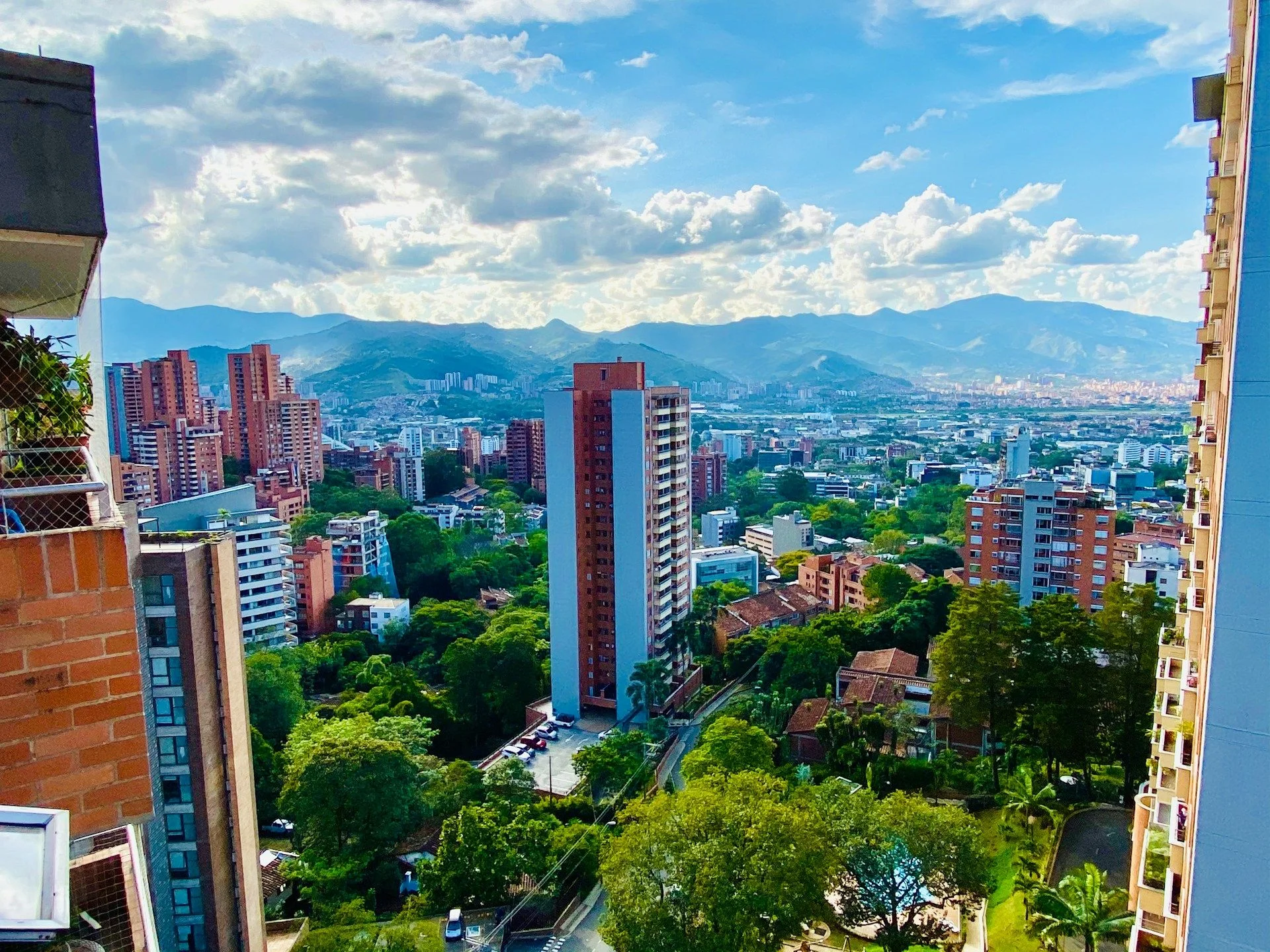Secondary Real Estate Direct from Owners & Agencies in MedellinReal estate in cityof eternal spring

Best offers
in Medellin
Benefits of investment in
Colombia real estate
Vibrant cities with modern living
Medellín and Bogotá offer a mix of new developments, urban culture, and rental activity.
Active rental demand from international residents
Colombia’s warm climate and affordable cost of living attract global tenants and digital workers.
Full ownership and dynamic local market
Buyers enjoy direct property rights and strong resale potential in city centers.
Vibrant cities with modern living
Medellín and Bogotá offer a mix of new developments, urban culture, and rental activity.
Active rental demand from international residents
Colombia’s warm climate and affordable cost of living attract global tenants and digital workers.
Full ownership and dynamic local market
Buyers enjoy direct property rights and strong resale potential in city centers.

Useful articles
and recommendations from experts
Why Secondary Real Estate in Medellín Entices Global Buyers
Medellín, Colombia’s “City of Eternal Spring,” has undergone a remarkable transformation into a world-class market for English-speaking investors seeking deal-priced resale properties with proven rental momentum. Secondary real estate in Medellín—spanning remodeled colonial houses in El Poblado’s Provenza enclave, mid-century apartment conversions in Laureles, and turnkey flats in the rejuvenated downtown (Centro) offices-turned-residences—typically sells at 15–25% below comparable new developments. Buyers benefit from immediate courtroom-ready occupancy, vibrant expat and university-student demand, and secure ownership via Colombia’s Torrens-style registry. With moderate transfer costs, no foreign‐ownership restrictions, and yields driven by tourism, digital-nomad influx, and corporate housing needs, Medellín’s secondary market offers both lifestyle allure and strong returns.
Diverse Neighborhoods Fuel Rental Demand
El Poblado’s Provenza and Manila sectors anchor high-end resale activity. Restored townhouses and boutique condo buildings lined with cafés and art galleries yield 5–7% gross to long-term tenants: creative-economy professionals, consulate staff, and executives at nearby Ruta N innovation district. Many buyers negotiate façade-renovation credits, preserving exposed brick and original woodwork—features that enable nightly-rate premiums of 20–25% when units are marketed as serviced short-stay apartments during events like the Flower Festival and Colombiatex expo.
Laureles and Estadio offer a more laid-back, residential vibe. Secondary-market walk-ups from the 1970s and ‘80s, often featuring large balconies and shared gardens, trade at discounts to newer high-rises but yield 4–6% on annual leases to professors at the University of Antioquia, medical residents at Clinica Universitaria, and digital-nomads drawn to co-working spaces along 70th Street. Simple interior upgrades—modern kitchens, en-suite bathrooms, high-speed internet installations—can boost achievable rents by up to 15%.
Medellín’s revitalized Centro district has attracted value-add investors to resale flats in former office towers near Parque Berrío and La Alpujarra. These turnkey apartments, many already furnished by prior owner-occupiers, yield 6–8% to short-stay guests attending cultural events at the Teatro Metropolitano and corporate visitors to Sabaneta’s business parks. Upgrading lobbies, adding keyless entry, and creating communal lounges help position these buildings as urban-living hubs commanding nightly-rate surcharges of 30–35% over standard rentals.
Regulatory, Tax, and Financing Essentials for Overseas Buyers
Purchasing secondary real estate in Medellín is streamlined by Colombia’s Torrens registry. Foreign buyers present passports and a Colombian tax identification number (NUIP) to register titles at the Oficina de Registro de Instrumentos Públicos. Closing costs are transparent and capped at roughly 3–4% of sale value, covering notary fees (0.5%), registration taxes (1%), and legal/agent commissions (1–2%). No special approvals or quotas restrict non-residents from acquiring one or multiple residential units.
Mortgage options for qualified foreigners exist through Bancolombia and Banco de Bogotá, with financing up to 70% LTV and interest rates in the 10–12% APR range. Many international investors supplement local loans with bridge financing from home-country banks to manage peso volatility. Capital-gains tax on profit from properties held under two years is 10%; if held longer, it drops to 5%. There is no inheritance tax, preserving equity for heirs.
Due diligence should include verifying clear encumbrance status, reviewing condominium association reserve funds (especially in older buildings), and confirming that any heritage-area structures comply with municipal preservation orders. Engaging a Medellín-based attorney ensures proper escrow handling and compliance with anti-money-laundering statutes enforced by the UIAF (Financial Information and Analysis Unit).
Medellín’s expanding transport and infrastructure network further enhances secondary real estate in Medellín’s appeal. The Metro lines (A and B) connect key districts—El Poblado, Laureles, and Centro—in under 20 minutes. Light-rail expansions to the northwest suburbs are underway, driving premiums of 5–7% for resale properties within 400 meters of stations. The upgraded Tranvía de Ayacucho streetcar and Metrocable gondolas boost accessibility to hillside communities, broadening tenant catchments for flats in lower-cost neighborhoods like Bello and Envigado.
Long-stay rental demand remains diverse: expat families at Colegio Colombo Británico and Colegio Alemán, visiting academics at EAFIT University, and project teams in the growing tech and life-sciences clusters. Cultural-tourism spikes during Feria de las Flores and International Poetry Festival generate high short-stay occupancy—often exceeding 80%—for serviced resale apartments in Centro and Poblado. Professional property managers handle end-to-end services—tenant screening, maintenance coordination, and monthly financial reporting—allowing overseas owners to enjoy largely passive income streams with full transparency.
Emerging micro-niches include converting underutilized duplexes in Estadio into co-living suites tailored to sports-event visitors, commanding blended yields of 8–10%, and targeting heritage homes in Conquistadores for boutique guesthouse conversions with curated art tours. By understanding Medellín’s micro-market dynamics, leveraging predictable legal frameworks, and aligning acquisitions with transit expansions and cultural-festival calendars, global investors can secure both experiential living and durable investment returns in Colombia’s most innovative city.
